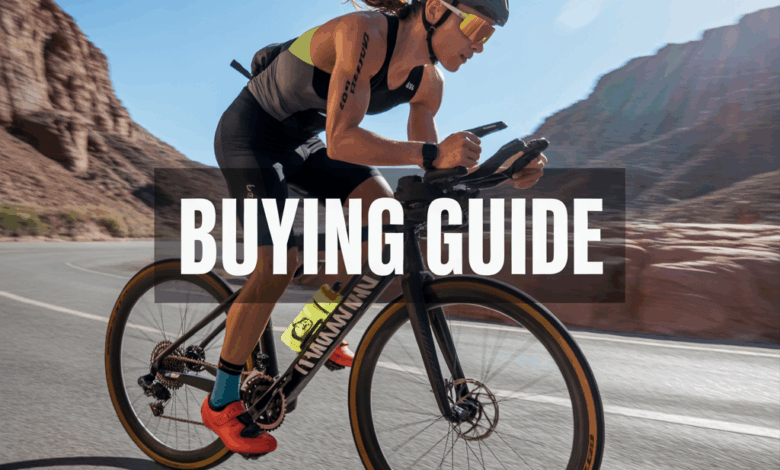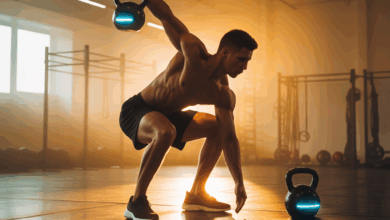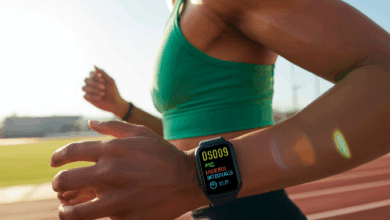Canyon Triathlon Bike Buying Guide: Choose the Perfect Canyon Tri Bike for Your Next Race

Ever pictured yourself slicing through wind on race day, split times improving and those run legs feeling lighter than ever? If that visual makes you grin — or wince because your current setup just isn’t cutting it — this canyon triathlon bike buying guide will help you decide which Canyon tri bike fits your goals, budget, and training style.
Why pick a Canyon tri bike? The aero advantage and value
Canyon has built a reputation for delivering race-ready triathlon time trial bikes with excellent aerodynamic performance and strong component choices, often at prices that undercut local bike shops. Whether you’re eyeing the Speedmax for pure triathlon speed or considering an aero road-to-tri conversion, getting the fit and features right is what matters most.
How to use this canyon triathlon bike buying guide
This guide walks you through the decision process: sizing and fit, frame materials, groupset and wheel options, practical training tips for triathlon setups, and lifestyle considerations like recovery and nutrition. Think of it as a pre-purchase checklist plus a training primer to get the most from your new bike.
Key purchase factors at a glance
- Fit and comfort: prioritize a professional bike fit
- Frame and fork: carbon frames for stiffness and aerodynamics
- Componentry: reliable shifting and a realistic maintenance plan
- Wheels and tires: aero wheels vs. all-around wheels depending on course
- Budget: new, used, or direct-to-consumer savings
Sizing, fit, and the importance of a proper bike fit
A triathlon bike is an investment — but its value depends on fit. A great bike that doesn’t fit will slow you down and increase injury risk. Canyon offers online sizing guides, but the best approach is to book a bike fit appointment after purchase (or before, if possible). A fit focuses on:
- Reach and stack to ensure you can maintain an aerodynamic position
- Arm pad placement and extension for comfort during long rides
- Saddle height and float to protect knees and hips
Frames, materials, and aerodynamics: what to consider
Carbon frames are standard in modern tri bikes for their stiffness and ability to shape aerodynamic tube profiles. But aerodynamics isn’t just the frame — it’s the whole package: handlebars, hydration systems, and even the athlete’s position. Look for bikes with integrated cockpit options and hidden cable routing to reduce drag.
Real-world example: Speedmax vs. converting an aero road bike
Some athletes choose a dedicated triathlon bike like the Canyon Speedmax for marginal gains on flat, windy courses. Others convert a comfortable aero road frame to a triathlon setup to save cost and rideability on varied terrain. Consider race type: long course and ITU-style time trials benefit most from a dedicated tri bike.
Components, wheels, and accessories
Groupset choice affects shifting reliability and weight. Electronic shifting can save mental load on race day, but mechanical is easier to service. Wheel selection should match your local conditions — deep-section aero wheels for flat courses, shallower rims for windy or hilly routes. Don’t forget practical triathlon accessories:
- Hydration systems and integrated bento/storage boxes
- Saddle bags that fit within the aerodynamic profile
- Clip-on aerobars tuned to your fit
Price tiers and buying options
New high-end Canyon triathlon bikes are an investment, but Canyon’s direct-to-consumer model often means you get better components for the dollar. Consider:
- Entry-level used models for beginners or those on tight budgets
- Mid-tier builds for committed racers wanting reliability and performance
- Top-tier bikes for elite athletes chasing every second
Training and fitness tips for triathlon success
Your bike choice matters, but how you train will determine your race-day performance. Here are practical tips and workout variations that pair well with a new Canyon tri bike:
Brick workouts to simulate race demands
- Short brick: 30–45 minute bike at race pace followed by a 10–20 minute run to practice transitions.
- Long brick: 90–120 minute ride with steady tempo efforts and a 20–40 minute run to build endurance.
- Interval brick: 4 x (10 min hard / 5 min easy) on the bike, then 4 x 2 min pickups on the run to train legs and pacing.
Power and speed workouts
- Threshold intervals: 3 x 15 minutes at FTP with 5 minutes easy between — great for sustaining race effort.
- VO2 max repeats: 6 x 3 minutes hard with equal rest to improve high-end speed.
Strength and mobility
Two 30–40 minute strength sessions per week focusing on core, glutes, and single-leg stability can pay big dividends in bike-to-run performance. Add daily mobility and hip-opening stretches to maintain an aerodynamic position comfortably.
Healthy lifestyle and recovery advice
Nutrition, sleep, and recovery are essential complements to a new bike and targeted training:
- Aim for 7–9 hours of sleep for recovery and adaptation.
- Fuel longer rides with 40–60g carbs per hour and practice race-day nutrition in training.
- Use active recovery rides, foam rolling, and regular rest weeks to prevent overuse injuries.
canyon triathlon bike buying guide: making the final decision
When choosing your Canyon triathlon bike, prioritize fit, course type, and your budget. Test-ride when possible, plan for a professional fit, and align your purchase with your training plan. If you race often and want marginal gains, a dedicated tri bike is worth it; if you value versatility, consider an aero road-to-tri conversion.
Frequently Asked Questions
1. What Canyon model is best for beginners?
For beginners, a mid-level Speedmax or an aero road frame adapted with clip-on aerobars is a sensible choice. Look for a stable platform with comfortable geometry to learn aero positioning without sacrificing control.
2. Do I need electronic shifting on a triathlon bike?
Electronic shifting offers precise, effortless gear changes and can be advantageous during races. However, mechanical groupsets are lighter on maintenance and more repairable on the road. Choose based on budget and your comfort with maintenance.
3. How important are wheels on a tri bike?
Wheels can be one of the biggest performance levers. Deeper, aerodynamic wheels reduce drag on flat courses, while shallower, lighter wheels are better for hilly or windy conditions. Match wheel choice to the races you’ll ride most.
Conclusion — Ready to ride?
Choosing the right bike is part science, part personal preference. Use this canyon triathlon bike buying guide to narrow your options, prioritize a proper fit, and align your purchase with your training and race goals. When you pair the right Canyon tri bike with structured workouts, smart nutrition, and consistent recovery, you’ll notice real gains on race day.
Want training plans to match your new bike? Check out our workout routines, explore fueling strategies in our nutrition guides, and integrate daily habits from our wellness tips to keep improving. Ready to test ride or compare models? Make a plan, book a fit, and get riding.





